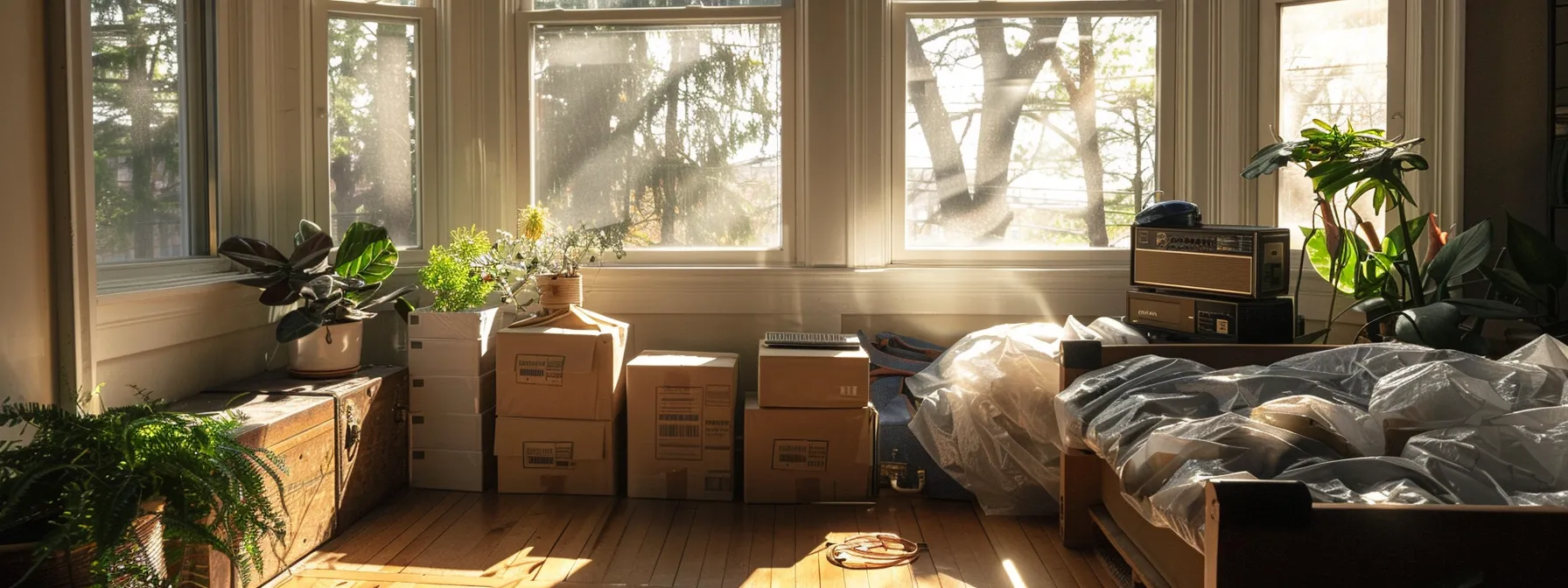Embarking on a move is like setting sail on uncharted seas, each journey unique in its own right.
It’s a complex voyage. Factor in new locations, treasured possessions, and tight timelines, they merge to produce an intricate ballet of logistics. Each step, if not meticulously choreographed, can lead to stress and disruption, making the choice of a proficient moving and storage partner a sail or sink decision in your relocation adventure.
Table of Contents
ToggleChoosing the Right Mover
Selecting a moving company that upholds the pinnacle of professional standards is essential to ensuring a seamless transition. Examine credentials, assess reviews, and solidify understanding of their service spectrum. It is pivotal to entrust your belongings to movers imbued with experience, integrity, and an unyielding commitment to excellence.
Selecting a moving company that upholds the pinnacle of professional standards is essential to ensuring a seamless transition.
A mover’s reputation, forged by customer satisfaction and reliability over time, is a trustworthy indicator of their caliber. Before committing, demand transparency in their pricing and policies. Exercise due diligence to align with a mover whose practices resonate with your expectations and relocation objectives.
Assessing Credibility and Reviews
In an industry where trust is paramount, careful scrutiny of a company’s reputation is non-negotiable. Reviews offer a window into the experiences of past clients, revealing levels of customer satisfaction and areas of concern. They provide critical insight into a mover’s reliability, handling of belongings, and ability to navigate complications.
Sifting through testimonials, seek patterns that indicate consistency in service quality. A surfeit of positive reviews may be persuasive, but discerning customers weigh both accolades and grievances. This balanced approach ensures a comprehensive understanding of a mover’s track record before entrusting them with your prized possessions.
A single review can resonate more than a voluminous brochure.
Critical review analysis involves more than mere glances at ratings; it requires a deeper dive into the substance of feedback. Assessments should extend beyond face value to nuances in customer narratives. Examine not just what is said but how—it’s the specificity in a client’s portrayal that often reveals the true caliber of a moving company’s service ethos.
Understanding Costs and Estimates
Comprehending the full spectrum of moving costs ensures a transparent financial experience.
- Binding Estimate: A guaranteed price based on assessed goods.
- Non-Binding Estimate: An initial quote subject to change upon actual weight.
- Binding Not-To-Exceed Estimate: A cap on the total cost; you pay less if the weight is lower.
- Hourly Rates: For local moves, often based on the number of movers needed.
- Fixed Rate: Agreement on a single fee for the entire move.
- Travel Fees: May include fuel costs and time spent in transit.
- Additional Services: Packing, unpacking, or special handling result in extra fees.
- Storage: Charges for temporary holding of items before, during, or after a move.
- Insurance and Valuation: Options for protecting your belongings during the move.
- Seasonal Rates: Higher costs during peak moving seasons like summer.
It is essential to differentiate between estimates and actual costs for budget accuracy.
Clarify all potential surcharges and tariffs to avoid unforeseen expenses during your relocation.
Scheduling Your Move
Coordination is paramount when initiating your relocation project. Select a time frame that accommodates your schedule, considering employment commitments, academic calendars, and housing availability.
- Choose a time frame that accommodates your schedule
- Reserve moving services early to secure availability
- Be aware of peak moving months and plan in advance
- Consider lease terms and real estate closing dates
- Inform relevant parties to synchronize services
Early reservation of moving services ensures availability on your preferred dates. Delays can limit your options significantly.
Remember, certain months witness higher moving volumes, particularly the summer and at month’s end. Booking during these peaks necessitates advance planning.
Secure a date with your movers as promptly as possible to guarantee their services on your desired day, mitigating the risk of scheduling conflicts.
When finalizing your move date, account for lease terms, real estate closing dates, or occupancy rules that may influence your timeline.
Lastly, inform all relevant parties of your move date to synchronize services. Utility transfers, address changes, and personal affairs must align with your transition.
Packing Smart
Methodical packing is the cornerstone of an efficient relocation, necessitating a strategic approach to the organization of your belongings. Items should be grouped by room and functionality, allowing for a seamless unpacking process at your destination. Utilize sturdy boxes, cushioning materials, and clear labeling to safeguard and itemize your possessions, which will facilitate a more streamlined relocation experience.
The underlying principle is to minimize potential damage while maximizing space utility. Employ specialized cartons for fragile items and wardrobe boxes for clothing to ensure their integrity. Embrace a systematic packing methodology to expedite the entire moving process, enhancing the protection and accessibility of your personal effects.
Essential Packing Materials
High-quality boxes are indispensable for safeguarding your belongings during transit. Choosing the correct size and durability is crucial for the protection of your items.
Bubble wrap and packing peanuts provide the necessary cushioning for your delicate possessions, substantially reducing the risk of damage. It’s imperative to wrap each item individually and fill any voids within the boxes.
Packing paper is another essential material, often preferable over newspaper which can leave ink residues. It’s apt for wrapping dishes, glasses, and other items needing surface protection and to buffer them against shocks.
Sturdy packing tape is used to securely seal boxes and reinforce their structure. Opting for a high-quality tape ensures the containment of your items as they are subjected to various movement stresses throughout the move.
Lastly, clear labeling markers are crucial for the organization of your move. Appropriately labeling each box with its contents and designated room facilitates a smooth unpacking process at your new residence.
Systematic Labeling Techniques
Strategic labeling is paramount to the logistics of moving, ensuring seamless unpacking and placement in the new location. Comprehensive labels must reference contents, room destinations, and handling instructions. Using color-coded stickers can delineate rooms, while symbols denote special care items.
Labels should be applied on multiple box sides for visibility from any angle. Reinforced tags resist tearing and moisture, preserving legibility during transport.
Additionally, inventory lists corresponding with box numbers enhance tracking and unpacking efficiency. Pair these lists (possibly digital for convenience) with physical labels for redundancy.
Compartmentalization within the boxes demands attention. Label individual bags or containers inside the boxes, ensuring small items aren’t misplaced upon opening.
Implementing a numbering system adds an extra layer of organization. Assign each box a unique number, correlating with a master inventory list detailing its contents and room assignment, facilitating tracking and verification upon arrival.
Lastly, do not underestimate the importance of legible handwriting. Printed labels may be preferable to ensure clarity and prevent confusion during the stress of moving day.
Protecting Fragile Items
Ensuring the safety of delicate possessions is paramount during the relocation process.
- Begin by selecting robust, high-quality packing materials specifically designed for fragile items.
- Wrap each fragile item individually with bubble wrap, securing the protection with high-adhesive tape.
- Employ specialized boxes such as dish packs or glass packs with compartmentalization for added security.
- Cushion the base, sides, and top of boxes with crumpled packing paper or foam peanuts before sealing.
- Make certain that boxes containing fragile items are not overly packed to avoid internal shifting during transit.
- Seal boxes with heavy-duty packing tape and reinforce the bottom for additional support.
- Clearly label each box as “Fragile” on multiple sides and indicate the correct upright position.Proper packing techniques minimize the risk of damage.
It is our objective to deliver your treasures unscathed to your new haven.
Storage Solutions Explored
In the complex web of relocation logistics, storage solutions emerge as a linchpin for transitional ease. Whether you’re bridging the gap between move-out and move-in dates, downsizing, or decluttering to stage a home for sale, storage unitsprovide a secure repository for your belongings. It is critical to select a climate-controlled facility to safeguard sensitive items from extreme temperatures and humidity. Additionally, you may opt for storage options offering enhanced security measures, including surveillance cameras, electronic gate access, and individual alarms for units. Transparent access policies will dictate how and when you can retrieve or add to your stored items. With attentive consideration, storage solutions can be tailored to maintain the pristine condition and security of your valuables until you’re ready to transition them to their new location.
Short-term vs. Long-term Options
Deciding between short-term and long-term storage hinges on the duration of your transitional period. Short-term units typically cater to needs spanning a few weeks to a few months. Long-term storage solutions, conversely, are designed for periods extending beyond several months, up to a few years.
When evaluating short-term alternatives, consider the flexibility of lease terms and the potential for pro-rated rent to avoid unnecessary expenses. For long-term storage, prioritize stability in cost and assurances of prolonged protection for your items, including pest control and periodic maintenance checks.
The physical attributes of the storage unit matter as well. With long-term options, ensure there is ample room to prevent damage from cramped conditions, and look for facilities offering inventory management services. On the other hand, short-term spaces can be smaller, prioritizing ease of access for quick transitions.
Additionally, the decision should factor in the frequency with which you’ll need to access your belongings. Frequent access is more manageable with short-term options located nearby, while long-term storage may not necessitate such convenience.
Ultimately, the choice between short-term and long-term storage must align with your unique relocation scenario and future plans for your possessions. Striking the right balance is paramount for both peace of mind and financial prudence.
Climate-Controlled Facilities
Climate-controlled storage is essential for preserving sensitive items, such as wood furniture, electronics, musical instruments, and collectibles, against damaging environmental conditions. Ensuring a consistent temperature and humidity level within these storage spaces protects your belongings from extreme weather fluctuations.
Units with climate control maintain a steady atmosphere regardless of external weather changes. This feature is critical in areas with extreme temperatures or high humidity.
Artworks and delicate fabrics require climate control to prevent the onset of mildew, mold, or other deterioration caused by unregulated environments. Standard storage units might not provide this level of protection.
Climate-controlled environments also benefit from enhanced air quality. Due to the regulated air flow, items prone to mustiness or odor accumulation, like upholstered furniture or mattresses, retain their freshness.
When evaluating storage options, it’s imperative to assess the potential long-term effects of climate on your possessions. Failure to do so could result in significant deterioration over time, eroding the value and condition of your carefully packed items.
Remember, not all moves necessitate the same level of climate control. However, investing in climate-controlled storage can safeguard your possessions from the unpredictable nature of environmental conditions.
Accessibility and Security Features
Our facilities prioritize ease of access while ensuring the utmost security for your belongings with advanced surveillance systems and secure entry protocols. Accessibility is facilitated through well-designed layouts that accommodate various move sizes.
Security measures include state-of-the-art monitoring systems and robust encryption for all digital access points. These systems function around the clock to provide continuous protection.
To enhance the safety of your possessions, our storage units are equipped with individual alarms, reinforced construction materials, and are regularly patrolled by security personnel. This multi-layered approach guarantees a pinnacle of security while still ensuring easy access for our clients.
Furthermore, we employ rigorous vetting procedures for all staff members, ensuring that only the most qualified and trustworthy individuals manage your items. In addition, our storage solutions are insured, offering an extra layer of financial protection against any unforeseen incidents. Rest assured, we strive to be a bastion of safety and reliability in the moving and storage industry.
Unpacking and Settling In
Upon the safe arrival at your new destination, the real task of transforming a house into a home begins. Our comprehensive service extends to meticulous unpacking and organized placement of your belongings, easing the transition into your new space. An experienced team skilled in furnishings arrangement and space optimization will meticulously recreate the comfort and functionality of your previous residence, or help chart a fresh layout tailored to your evolving preferences. With acute attention to detail, we ensure every item is situated to your satisfaction, as seamlessly settling into your new environment is the final, yet most vital, stage of the relocation journey.
Organizing by Room Priority
When planning the layout of your new home, consider the utility of each space. The key is to identify which rooms you will use immediately upon moving in and prioritize their setup first. While it’s tempting to start with living spaces, practicality may dictate that bedrooms or bathrooms take precedence to provide immediate comfort after the strenuous moving day.
Strategically approaching the organization of your home ensures a smoother transition, both physically and emotionally. Begin by designating the kitchen, bedroom, and bathroom as primary spaces for set up, as these areas are essential for daily routines. Efficiency in these rooms can significantly impact your adjustment period and overall well-being in the initial days following your move.
Moreover, tackling the main living areas next contributes to a sense of normalcy, especially after long hours of sorting and unpacking boxes. Ensuring that spaces like the living room and dining area are operational allows you to unwind and enjoy meals in a homely atmosphere, which is pivotal in making the new space feel comfortable and welcoming.
Subsequently, auxiliary rooms such as home offices, guest rooms, or recreational spaces should follow in the organization hierarchy. These areas, while important, are not immediately crucial to your day-to-day operations and can be arranged with more flexibility once the essentials are in place.
In concert with undivided diligence, we’re adept in advising on and implementing a logical room priority strategy. Trust us to cultivate an organized and harmonious home from the outset, bearing in mind your unique lifestyle and necessities.
Furniture Placement Strategies
As experts in spatial management, we often emphasize the importance of establishing a focal point in each room. This central feature, often a large piece such as a sofa or a bed, anchors the space and sets the tone for subsequent furniture arrangement.
Consider traffic flow patterns to allow for unhindered movement throughout the space. The positioning of rugs and tables should complement this flow, not obstruct it.
Symmetry and balance are fundamental in achieving a harmonious environment. Arranged furniture should mirror across a central axis when applicable, contributing to a well-ordered and aesthetically pleasing area.
The strategic placement of furniture can also delineate different zones within an open-plan area, without the need for physical barriers. Thoughtfully positioned sofas, shelves, or tables can create distinct living, dining, or working spaces.
It is crucial to measure doorways, hallways, and staircases to ensure furniture can be moved into and arranged within your new home without excessive difficulty. Furniture should fit comfortably in the intended space, leaving ample room for accessibility and aesthetic appeal.
Lastly, consider the light sources and window placements when positioning furniture. This not only maximizes natural light in your living spaces but also ensures you have a cohesive view and an inviting atmosphere in your home.
Making the New Space Home
An abiding sense of belonging begins with an intimate knowledge of your new surroundings; take the time to know every nook and cranny. This familiarity fosters a deep emotional connection, transforming the space into a personal sanctuary.
Embrace the idiosyncrasies that make the space uniquely yours. Even the smallest details contribute to the character of your abode.
Integration of personal effects evolves a house into a home. Family photographs, cherished mementos, and art that speaks to your soul should be displayed with intention. Such embellishments echo your identity, resonance that fills the space with warmth and narrative continuity.
Blending form with function, your possessions should synergize with the architectural attributes of your new residence. Thoughtful selection and placement of furnishings reinforce your stylistic preferences while optimizing the utility of every square foot. This harmony between the physical and the emotional aspects of homemaking is crucial in crafting an oasis that is both a refuge and a canvas for life’s moments.
Frequently Asked Questions
Here are some commonly asked questions about moving and storage:
Q: How do I choose the right moving company?
A: When selecting a moving company, examine credentials, assess reviews, and ensure they align with your expectations and relocation objectives.
Q: Why is scheduling my move important?
A: Scheduling your move is crucial for ensuring a smooth transition and avoiding scheduling conflicts with other parties involved.
Q: What should I consider when selecting a moving date?
A: Consider your schedule, lease terms, real estate closing dates, and any other factors that may influence your timeline.
Q: How far in advance should I book moving services?
A: It is recommended to book moving services as early as possible to secure availability, especially during peak moving months.
Q: How can I coordinate services and notify relevant parties?
A: Inform all relevant parties of your move date to synchronize services, including utility transfers, address changes, and personal affairs.
How much does it cost to hire a moving and storage company?
When it comes to hiring a moving and storage company, it is important to understand the factors that affect the costs involved. Several variables come into play, such as the distance of the move, the size of your current residence, the amount of belongings you have, and any additional services you may require.
The distance of your move is one of the primary factors determining the cost. Local moves within the same city typically have lower costs compared to long-distance moves across different states or even countries.
The size of your current residence also plays a role in the cost calculation. The larger your home or apartment, the more items there are to be packed, loaded, and transported. This affects both the time it takes to complete the move and the amount of manpower required.
The volume and weight of your belongings are taken into consideration as well. Some moving companies charge based on the space your items take up in the truck, while others use weight as a determining factor. It is essential to accurately estimate the size and weight of your possessions to receive an accurate quote.
Certain additional services can increase the overall cost of hiring a moving and storage company. These services may include packing and unpacking assistance, furniture disassembly and reassembly, specialty item handling, and storage solutions. It is advisable to discuss your specific needs with the moving company to receive a detailed breakdown of the costs for these extra services.
Lastly, keep in mind that different moving and storage companies have their own pricing structures. It is always a good idea to obtain quotes from multiple companies to compare prices and services offered. This will help you make an informed decision that aligns with your budget and requirements.
Overall, the cost of hiring a moving and storage company depends on various factors such as the distance of the move, the size of your current residence, the volume and weight of your belongings, and any additional services you require. By considering these factors and obtaining multiple quotes, you can find a moving and storage company that suits your needs while staying within your budget.
Exploring Relocation: Insights, Tips, and GuidanceWhat are the benefits of using a professional moving and storage service?
Using a professional moving and storage service offers numerous benefits that can make your relocation process easier and more efficient. Here are some key advantages:
- Expertise and Experience: Professional moving and storage companies have expert knowledge and years of experience in handling all aspects of the moving process. They are trained in packing, loading, and transporting belongings safely and efficiently.
- Time-Saving: Moving can be a time-consuming task, involving numerous logistical challenges. When you hire professionals, they take care of most of the work, allowing you to focus on other important aspects of your move or settle into your new home sooner.
- Equipment and Resources: Professional moving and storage services come equipped with the necessary tools, equipment, and resources to handle moves of any size. They have specialized moving supplies, such as sturdy boxes, protective padding, and dollies, to ensure the safe transportation of your belongings.
- Safety and Liability: By entrusting your move to professionals, you minimize the risk of damage to your belongings and potential injuries. Moving companies are insured, meaning that in the unlikely event of any accidents or damages, you are protected.
- Efficient Packing and Organization: Professional movers are skilled in proper packing techniques, ensuring that your items are securely packed and protected during transit. They also employ efficient labeling and organization systems, making it easier for you to find and unpack your belongings at your new location.
- Stress Reduction: Moving can be a stressful experience, but hiring professionals can alleviate much of that stress. They handle the logistics, heavy lifting, and transportation, giving you peace of mind and reducing the physical and mental strain associated with moving.
- Flexible Storage Solutions: Many professional moving companies also offer storage solutions, providing a convenient option if you need to temporarily store your belongings. These storage facilities are typically secure, climate-controlled, and monitored, ensuring the safety and condition of your items.
In summary, using a professional moving and storage service can simplify your relocation process, save you time and effort, and provide peace of mind knowing that your belongings are in the hands of experts.
Are my belongings insured while in storage?
Yes, your belongings are insured while in storage. When you choose a reputable moving company, they typically offer insurance coverage for your items during the storage period. This means that if any damage or loss occurs to your belongings while they are stored, you would be eligible to file a claim and potentially receive compensation. It’s important to note that the exact coverage and terms of the insurance may vary depending on the specific moving company and insurance policy you choose. So, it’s always a good idea to review the insurance details provided by the moving company and ask any questions you may have before making a decision. This ensures that you have a clear understanding of the coverage provided and can make an informed choice to protect your belongings during their time in storage.
How far in advance should I book a moving and storage company?
Booking a moving and storage company well in advance is recommended to ensure a smooth and successful moving experience. Ideally, it is best to book a moving and storage company at least 4-6 weeks before your desired move date. However, depending on various factors such as the time of year, the distance of your move, and the availability of moving companies, it is advisable to book as early as possible to secure your preferred moving date.
By booking in advance, you can take advantage of more flexible scheduling options and potentially secure discounts or special offers. This allows both you and the moving company to adequately plan and prepare for the move, ensuring that all necessary arrangements are made in a timely manner.
Keep in mind that peak moving seasons, such as spring and summer, tend to be busier for moving companies. During these times, it is even more crucial to book in advance to secure your desired moving date. Additionally, if you have specific requirements or need additional services such as packing or specialized handling, it is advisable to book even further in advance to allow for the necessary preparations.
Booking your moving and storage company in advance not only offers peace of mind but also allows for a more efficient and organized moving process. So, don’t wait until the last minute – make your moving plans early and secure the services of a reputable moving and storage company to ensure a seamless transition to your new location.
Do I need to provide my own packing materials, or does the company supply them?
Many moving companies offer packing services as part of their comprehensive package. These services typically include the provision of packing materials. However, it is always advisable to confirm with the specific moving company you are working with to understand their specific policies and whether they will provide packing materials or if you need to provide your own.





